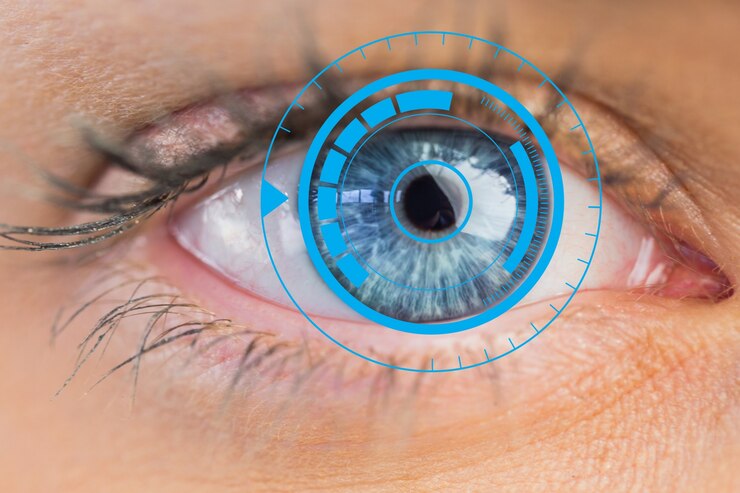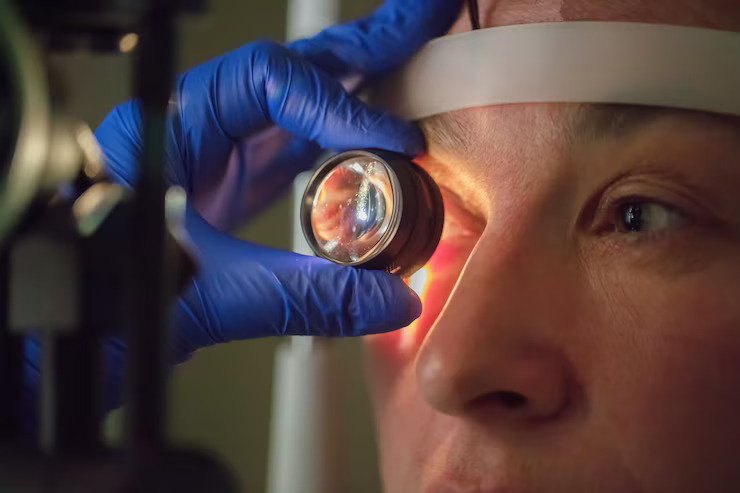Cataract Surgery: A Comprehensive Guide
Cataracts are a common eye condition, especially in older adults, where the lens of the eye becomes cloudy, leading to impaired vision. Cataract surgery is a highly effective procedure to restore clear vision by removing the cloudy lens and replacing it with an artificial one. This article will provide an in-depth look at cataract surgery, including its causes, symptoms, diagnosis, surgical procedure, recovery, and benefits.
Understanding Cataracts
The lens of the eye focuses light onto the retina, which sends visual information to the brain. A cataract clouds this lens, blocking light and making vision blurry or dim. Cataracts can harm one or both eyes and usually develop slowly.
Causes and Risk Factors
Numerous things can lead to cataract development, such as:
- Aging: the most frequent reason, as the lens’s proteins deteriorate with time.
- Genetics: A family history of cataracts increases risk.
- Diabetes: Increases the likelihood of developing cataracts.
- Sun Exposure: Prolonged exposure to UV rays without protection.
- Smoking and Alcohol: Both are linked to higher cataract risk.
- Eye Injuries: Cataracts can be brought on by ocular trauma.
- Medications: Long-term use of steroids can lead to cataracts.
Symptoms of Cataracts
Cataracts develop slowly and may not show symptoms initially. As they progress, common symptoms include:
- Blurred or cloudy vision.
- Difficulty seeing at night.
- Sensitivity to light and glare.
- Fading or yellowing of colors.
- Double vision in one eye.
- Frequent changes in eyeglass or contact lens prescription.
Diagnosis of Cataracts
Diagnosing cataracts involves a comprehensive eye exam, which includes:
- Visual Acuity Test: Measures how well you can see at various distances.
- Slit-Lamp Examination: Uses a special microscope to examine the eye’s structures.
- Retinal Exam: After dilating your pupils, the doctor examines the retina.
- Applanation Tonometry: Measures the pressure inside your eye.
Cataract Surgery: An Overview
Throughout the world, one of the most popular and effective surgeries is cataract surgery. It is typically recommended when cataracts interfere with daily activities such as reading, driving, or watching TV. The procedure involves removing the cloudy lens and replacing it with a clear artificial lens, known as an intraocular lens (IOL).
Types of Cataract Surgery
There are two main types of cataract surgery:
1. Phacoemulsification (Phaco):
- The most common method.
- A small incision is made in the cornea.
- An ultrasound probe is used to break up (emulsify) the cloudy lens.
- The lens fragments are suctioned out.
- An IOL is inserted into the lens capsule.
2. Extracapsular Cataract Extraction (ECCE):
- Used for advanced cataracts where the lens is too hard to break up.
- A more extensive cut is performed to extract the foggy lens in one piece.
- An IOL is implanted.
- Requires more recovery time compared to phacoemulsification.
Types of Intraocular Lenses (IOLs)
There are various IOL varieties available, and each has benefits of its own:
- Monofocal IOLs: Provide clear vision at one distance, usually set for distance vision. Reading glasses may still be needed.
- Multifocal IOLs: provide crisp vision over a variety of distances, negating the need for glasses.
- Toric IOLs: Correct astigmatism as well as cataracts.
- Accommodative IOLs: Designed to move or change shape inside the eye, providing focus at different distances.
The Surgical Procedure
Cataract surgery is usually performed on an outpatient basis and typically takes about 15-30 minutes. The steps include:
1. Preparation:
- Eye drops are administered to dilate the pupil and numb the eye.
- In some cases, a sedative may be given to help you relax.
2. Incision:
- A small incision is made in the cornea.
3. Lens Removal:
- The cataract is broken up using ultrasound waves (phacoemulsification) and removed.
4. Lens Implantation:
- The IOL is inserted into the empty lens capsule.
5. Closure:
- Usually, the incision closes on its own and doesn’t need to be sewn.
6. Post-Operative Care:
- To lessen inflammation and avoid infection, ocular drops containing antibiotics and anti-inflammatory agents are recommended.
- One option would be to cover the eye with a shield.
Recovery and Aftercare
Recovery from cataract surgery is typically quick, with most people experiencing significant improvement in vision within a few days. However, complete healing can take up to eight weeks. Post-surgery care includes:
- Avoiding Strenuous Activities: Avoid heavy lifting, bending over, or activities that might strain the eye for at least a week.
- Protecting Your Eyes: Wear sunglasses to protect from bright light and avoid getting water or irritants in the eye.
- Follow-Up Visits: Attend all scheduled follow-up appointments to monitor the healing process and ensure no complications arise.
- Medication Adherence: Use prescribed eye drops as directed to prevent infection and control inflammation.
Benefits of Cataract Surgery
Cataract surgery offers numerous benefits, including:
- Improved Vision: The primary benefit is significantly clearer vision.
- Enhanced Quality of Life: Better vision allows you to resume daily activities and hobbies.
- Increased Safety: Improved vision reduces the risk of falls and accidents.
- Reduced Dependence on Glasses: Multifocal and accommodative IOLs can decrease the need for glasses or contact lenses.
Potential Risks and Complications
Like any medical operation, cataract surgery has some dangers even though it’s normally safe. These hazards include:
- Infection
- Inflammation
- Bleeding
- Swelling
- Retinal Detachment
- Glare and halos around lights
- Posterior capsule opacification (PCO) – a condition where the lens capsule becomes cloudy, treatable with a quick laser procedure.
Conclusion
Cataract surgery is a highly effective and safe procedure that can restore clear vision and improve quality of life. By understanding the causes, symptoms, diagnosis, and treatment options for cataracts, patients can make informed decisions about their eye health. If you or a loved one is experiencing symptoms of cataracts, consult with an ophthalmologist to discuss the best treatment plan. With advances in surgical techniques and intraocular lens technology, cataract surgery continues to offer life-changing benefits for millions of people worldwide.
For any further queries, Plz visit drvivekgarg.in








